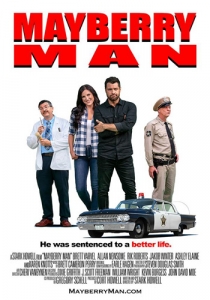
The term “organic web traffic” describes the way visitors arrive at your website as a result of “natural” search.
Organic traffic is the reverse of paid traffic, which defines the check-outs generated by paid ads. Organic visitors locate your site after making use of an internet search engine like Google or Bing, and are not “referred” by any other web site.
The simplest method to increase the natural web traffic of your website without getting a traffico anomalo google error is to routinely publish quality and relevant content on your blog site.This is, nevertheless, just one of several techniques to use for getting new visitors.
The science that focuses on enhancing organic circulation is called Search Engine Optimization or SEO. Organic traffic comes as a result of searches used by readers through search engine, such as Google, Yahoo, or Bing.
Since organic traffic is free, that is the kind of website traffic that proprietors want the most.
HOW TO BOOST NATURAL WEBSITE TRAFFIC: 11 LEADING SEARCH ENGINE OPTIMIZATION TIPS
The challenge for any type of organization ensuring that when people look for a product and services like your own, they find you and not your rival. But there’s no need to rely on pricey pay-per-click advertising and marketing; there’s plenty you can do to increase natural web traffic at no charge except your time.
1. Direct content to your readers, not to internet search engines
Get to know your customers’ personalities, in order to know whose problems your content is solving. By producing quality educational content that reverberates with your perfect customers, you’ll naturally boost your Search Engine Optimization.
Talking about those primary problems, using the keyword phrases they use in search queries is the best path to increasing your audiences. Writing for search engines alone is useless; all you’ll have is keyword-riddled rubbish.
Pleasing your target audience will result in also pleasing internet search engines.
2. Feed your blog site routinely
Blog writing is perhaps the most efficient method to raise your natural site website traffic. Blog content lets you go deeper than your website permits, creating a big, expanding brochure of practical, persona-optimized web content targeted to your market niche.
On the other hand, poorly-written, “spammy” web content will do more damage than help. Avoid it.
3. Connect to the blogosphere
The blogosphere is an area for reciprocators.
Read, comment on, and link to other individuals’ websites as well as their blogs, specifically those operating in your market. That will encourage them to read, comment, and link to your content bringing in even more leads.
An excellent area to start is Quora. A cool tactic for getting your voice out there is to spend some time answering individuals’ concerns on Quora as well as supplying genuine, valuable and concrete understandings for the certain location you are a professional in.
Tip: Always use a VPN while using Quora, which will give you more specific results according to the country designated in your VPN.
4. Use long-tail keywords
Better than using the most prominent search phrases in your market is choosing keywords that are more detailed and specific to your services or product.
In time, Google as well as other internet search engines will certainly recognize your website or blog as an information source for that certain subject, which in turn will boost your web search position while helping your perfect clients find you.
Keep in mind that positioning on Google has to do with having a sphere of influence for a certain niche topic.
This article, for example, is targeted tor those that want detailed advice on enhancing natural website traffic. We’re not targeting every SEO-related keyword.
5. Get your meta down pat
The meta title, the URL, and the description are the three crucial ingredients for maximizing traffic for a website or an article. It’s simple yet reliable.
Meta summaries and meta data are your way of telling Google precisely what you’re speaking about.
We make use of a variety of devices, including Yoast Search Engine Optimization plugin for WordPress, HubSpot’s SEO tools, and Ahrefs to help us optimize our web pages.
But it’s not enough to just ‘mount a plugin’, You need to work on describing each web page in turn.
6. Continually create quality content
Try to compose and release content as often as possible, but not at the expense of top quality! The more high-quality content — including full-sized articles as well as posts — you have on your site or blog, the more opportunities you provide for getting found through organic web traffic.
7. Use internal links
As soon as you’ve accumulated a respectable catalog of content, you can link to older posts, as well as to your own website, guiding visitors to appropriately related content.
Internal linking keeps visitors on your website longer, which helps improve your search rankings.
Don’t, however, overuse interior links. Overuse may begin to look like spam.
8. Encourage incoming web links
Google prioritizes websites that have a lot of inbound web links, especially those coming from other reliable sites.
Urge clients, buddies, family members, distributors, industry mavens, and fellow blog writers to connect to your website.
The more inbound web links you have, the higher your website will rank, because the more reliable sources link to you, the more reliable your site becomes in the eyes of search engines.
Beware Search Engine Optimization “snake oil salespeople”, though. Attempting to trick Google with spammy links from low-reputation websites is a sure path to failure.
Some web links can in fact, damage your Search Engine Optimization.
9. Blow your own horn
In addition to linking to other websites and getting them to link to yours, you can promote your blog content by linking it to Facebook, Twitter, LinkedIn, StumbleUpon etc.
If individuals are “hanging around” your web content on social media, that sends a strong signal to Google that the material is relevant, helpful, and intriguing.
10. Use social networks
Build visibility on social media networks such as LinkedIn, Twitter, Instagram, and Facebook.
This is a way to get your name and internet site address out on the net. Add “share” buttons to your website to make it easy for individuals to share your content.
Most important, of course, is to compose material worthy of sharing!
11. Use metrics to maximize results
Use Google Analytics to track site visitors to your website and blogsite.
Learning where readers are coming from and which search terms led them to you allows you to fine-tune your content.
Ultimately, to enhance natural, organic website traffic, Give searchers what they want – quality, guidance, and insight..
Millie Oscar writes SEO and technology-related articles and her articles have appeared in a number of sites, including EzineArticles.com, ArticlesBase.com, HubPages.com, and TRCB.com. Her articles focus on balancing information with SEO needs–but never at the expense of providing an entertaining read.











Follow us online!